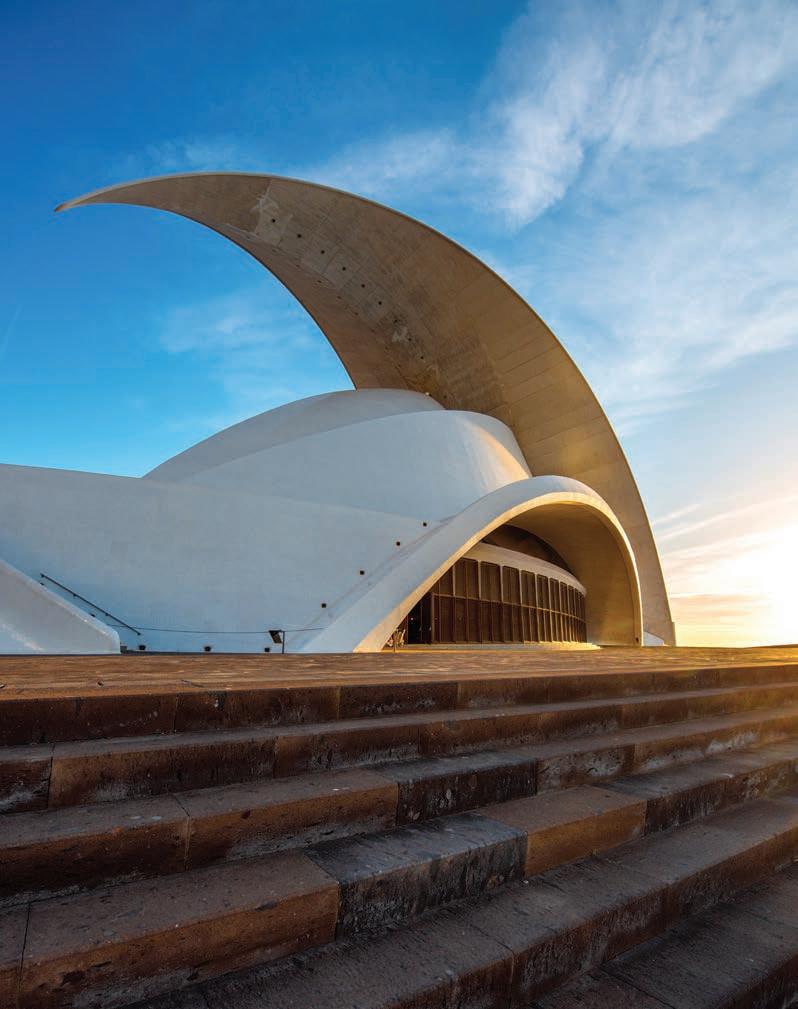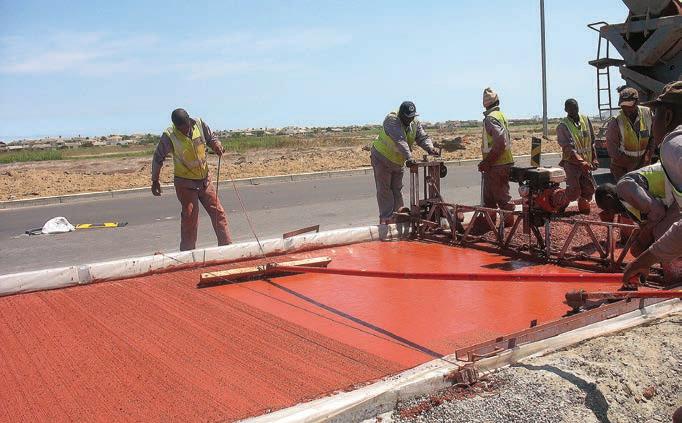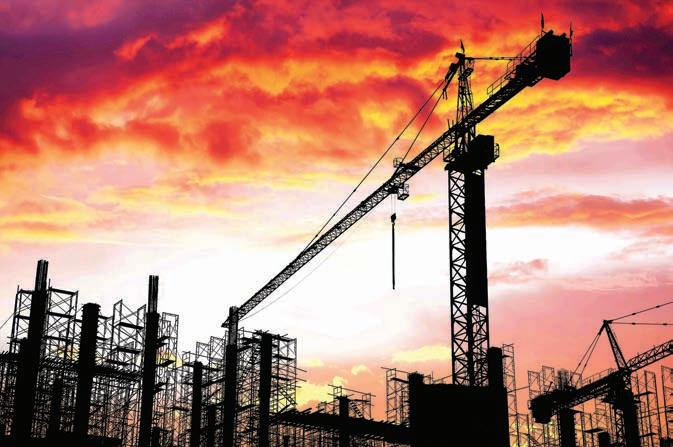
4 minute read
Concrete is crucial for post-pandemic revival
CONCRETE IS CRUCIAL FOR POSTPANDEMIC REVIVAL
After water, concrete is the most used resource in the world and contributes significantly to SA’s standard of living. It is used for a multitude of infrastructural projects, ranging from houses, hospitals, schools and universities to offices, provision of water reticulation and sewers, community dams and reservoirs, as well as road and highway networks. It will also be an essential part of any future “super-city” in SA.
Concrete is one of the most durable and cost-effective materials on earth. This extended lifespan results not only in lower expenditure of energy in building new homes and infrastructure, but also in substantially reduced maintenance and impact on the use of finite resources. In the long term, concrete’s durability, low maintenance and re-usability have strong positive economic effects. Concrete structures have optimal energy performance
The Auditorio de Tenerife “Adán Martin” in Santa Cruz de Tenerife in the Canary Islands, designed by renowned Spanish architect, Santiago Calatrava Valls, spectacularly shows the creative scope concrete offers.
With adequate infrastructural provision high on the national priority list as the pandemic subsides, concrete will be the one indispensable component for almost all municipal or national government rebuilding and development projects, writes Bryan Perrie, CEO of Cement and Concrete SA (CCSA)

with significant benefits in terms of wholelife energy usage.
Life support
Up to 40% of all materials used in human activity are directed into the built environment. This has a direct and visible impact on the world’s finite resources. In practice, many of the factors affecting the contribution of concrete to sustainable development are interrelated. For example: • The use of cement extenders in the concrete mix has a positive environmetal impact because it reduces the
(Left): Concrete is being widely used for bus lanes in South African cities.
amount of cement needed in the mix – and less production of cement means lower CO₂ emissions. • Concrete also uses other industry secondary products, resulting in waste minimisation and savings in landfill space.
To achieve maximum sustainability benefits during a building or structure’s life-cycle, the designer, specifier and owner need to consider many factors during the design, construction, usage and end-of-life phases. This applies not only to saving energy and reducing the use of finite resources, but also to fully applying the other inherent advantages of concrete.
These advantages include:
• Local material
All the primary materials used in concrete (apart from some sophisticated imported admixtures) are produced locally. Extenders and slag aggregates used in concrete mixes are secondary products that would be dumped if they were not used by the cement and concrete industry. While the cement factories are generally located close to their raw material sources, sources of aggregates and ready-mix plants can be placed close to the areas of demand to reduce the energy required for transport.
• Labour-intensive
With unemployment at unprecedented levels, concrete and concrete products in most cases lend themselves to labourintensive construction – whether for small-scale manufacture of concrete products or the use of concrete in various forms of construction. In the provision of human settlements, all the concrete roof tiles, concrete bricks or blocks, concrete kerbs, concrete reticulation poles, concrete block paving and concrete pipes that are used can be installed using labour-intensive construction methods.
• Design flexibility
As concrete products and elements can be constructed into any shape and cast in
(Above right): Virtually no building site in the world can operate without concrete.
various ways, designers enjoy an enormous amount of flexibility. The fact that concrete can be constructed in-situ or by precasting – or using a hybrid of the two methods – provides the designer with exceptional creative scope when planning a project, particularly if it needs to be fast-tracked.
• Variety of finishes
Using concrete, there are unlimited possibilities for finishes that can be designed in a range of attractive colours and a multitude of textures. The finishes are incorporated into the concrete during the construction stage, rather than applied later as a separate operation. The use of concrete as the ultimate finish means no other finishing activities such as painting, tiling or coating are required, saving energy and materials at construction stage with lower future maintenance costs. Furthermore, concrete finishes do not emit any toxic or volatile products into the environment and have no detrimental effects on the community during their entire life-cycle.
• Life-cycle cost
Various analyses show that because of concrete’s durability, the whole life cost of many projects is lower when it is used as the major construction material. At the end of the usage phase, concrete can easily be recycled and crushed to
produce building aggregate. SA has not yet fully exploited the recyclability of concrete.
• Structural integrity
The structural design and construction of concrete elements in buildings (including in-situ reinforced concrete, precast concrete, tilt-up, hybrid construction and post-tensioned concrete elements) have been fully appreciated and acknowledged by architects, structural engineers and contractors for many years. Well-constructed concrete can last well over a century. For example, the Pantheon in Rome, built in 126 AD, is still in use and has a coffered dome which – almost 1 900 years after it was constructed – remains the world’s largest unreinforced concrete dome.

Last word
Concrete offers many other benefits, including sound insulation, fire-resistance, light reflectance and roads requiring far lower maintenance and far fewer of the pothole repairs that now plague municipalities. Concrete structures are also beautiful and enhance the aesthetic appeal of any town or city. This age-old material is the cornerstone for providing the infrastructure that can lead SA to a sustainable future.










